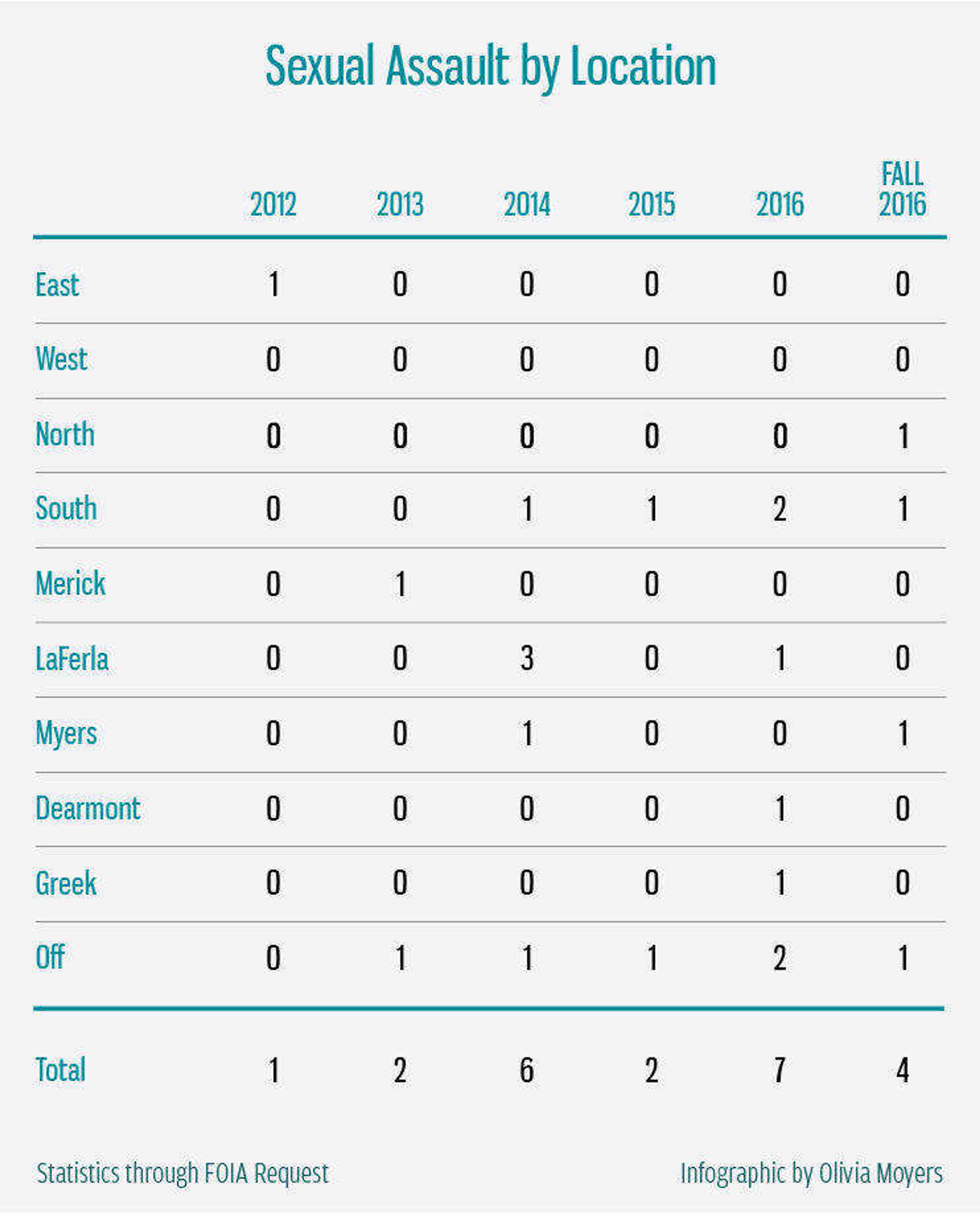Statistics: Sexual assault and misconduct data from Southeast clouds issue
The complexities of sexual assault statistics at Southeast Missouri State University obscure the prevalence of sexual assaults on campus. On Oct. 18, the Arrow submitted a Freedom of Information Act request to the Office of Student Conduct asking for information under Title IX and the Clery Act about statistics on sexual assault within the university system...
The complexities of sexual assault statistics at Southeast Missouri State University obscure the prevalence of sexual assaults on campus.
On Oct. 18, the Arrow submitted a Freedom of Information Act request to the Office of Student Conduct asking for information under Title IX and the Clery Act about statistics on sexual assault within the university system.
Under state and federal law, several records kept by Southeast are considered public information.
In an interview with assistant dean of students Dr. L. Randy Carter last October, he said the numbers from the Arrow’s request should mirror those on the yearly Clery report published by the Department of Public Safety every year. However, when the Arrow received the requested information on Dec. 8, the numbers did not match.
The statistics are complex to compare.
“The numbers in the Clery Report only reflect the cases that happened on campus, adjacent to campus or on school-sponsored trips,” Dr. Carter said when asked why the Clery statistics and FOIA request didn’t match.
On Dec. 9, university president Dr. Carlos Vargas sent an email to the full campus with a third set of statistics on sexual assault that did not match either the Clery Report or the Sunshine Law request statistics.
Third-party anonymous reports
Anonymous reports of sexual assaults are generally made by Counseling and Disabilities services representatives, who do not have to report the case in full to the student conduct office depending on the confidentiality preferences of victims. Rather, the services representative is solely mandated to report that a sexual assault occurred.
All university employees -- faculty, staff and student workers -- are considered mandated reporters.
If any mandated reporter receives these types of reports, they are supposed to fill out a form reporting as much information about the sexual assault as possible. If they do not report the victim’s name, it becomes anonymous.
Dr. Deborah Below, vice president for enrollment and student success and dean of students, classified both types of reports as “third-party anonymous reports.”
Below said each third party anonymous report will be counted as a Clery report statistic, even though such reports won’t be used to open a student conduct case unless the victim’s name is shared.
However, the Clery report includes approximately five more sexual assaults than those that went through the adjudication process, but nine less than the anonymous reports from the years 2012 to 2015.
Additionally, every sexual assault for the past five years, except for one, that had been reported in the FOIA response had a sanction from the student conduct office to go along with it.
The only time the third-party anonymous statistics have ever been published by the university was in Vargas’s email.
According to Frank LoMonte, Director of the Student Press Law Center, it is improper for the university to have a separate set of statistics other than those from the Clery report.
“It’s not legally compliant for the Clery Act report to include only cases that have gone through adjudication,” LoMonte said. “Anytime any person in authority on campus is told that a sexual assault occurred, the law requires that to be counted in the annual statistics, even if no hearing is ever held.”
Counseling and Disabilities Services had different numbers to report that did not match anonymous reports, even though they are mandated to report statistics to the Office of Student Conduct.
“I believe we had contact with 33 people over the past year,” Donna St. Sauver, coordinator for the Violence Prevention Program said. “Some of those people denied services. Twenty-seven students chose to have counseling or advocacy services, and we have clients that chose to keep it completely confidential.”
Even though St. Sauver has confidentiality under state law in her role as a counselor, which allows her to not have to report information confided in her by a victim, she said she is still federally mandated to report these statistics. She also explained that these specific sexual assaults occur anywhere in the community rather than only on campus, and are not limited to incidents allegedly committed by Southeast students.
Evolution of statistics at Southeast
There has been an increase in reported numbers from 2011 to present day in all sets of assault statistics. Below said the increase is due to the university’s push to encourage victims to report assault rather than an increase in actual sexual assaults.
“The university has made changes to improve ways to report sexual assault,” Below said.
Southeast provides several different forms of information to incoming students about sexual assault in the form of the My Student Body modules as well as a written letter and other handouts.
Below said whereas she used to be hesitant to speak about sexual assault at orientation, she finds now that it is expected. She said she believes it’s an important conversation to have with incoming students.




